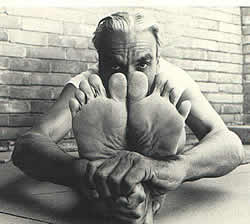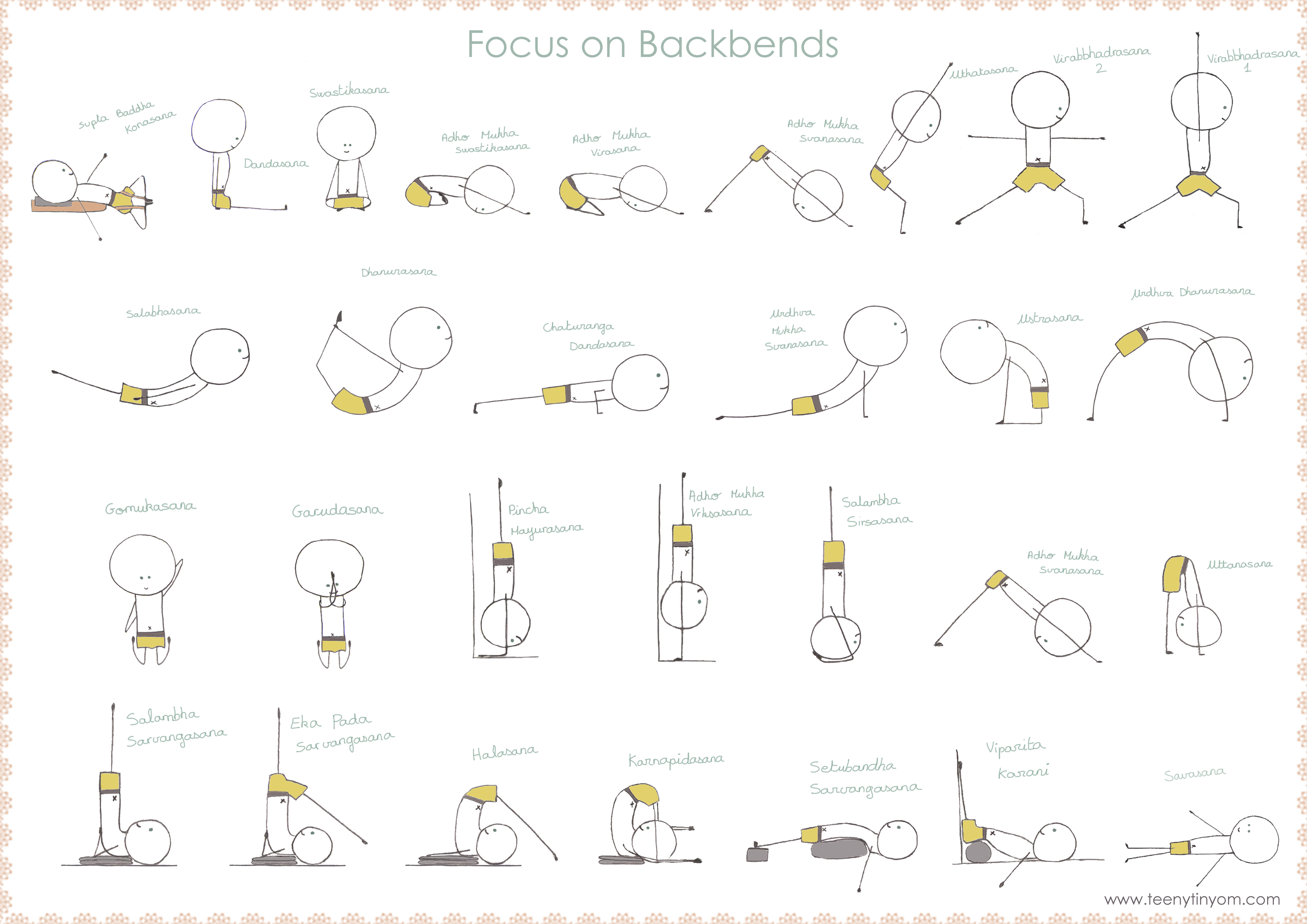- Samasthiti
- Urdhva Hastasana
- Urdhva Baddhanguliyasana
- Namaskarasana
- Urdhva Namaskarasana from Urdhva Hastasana
- Utthita Hasta Padasana
- Parsva Hasta Padasana
- Utthita Trikonasana
- Virabhadrasana II
- Utthita Parsvakonasana
- Parsvottanasana (Standing with concave back hands on waist)
- Parsvottanasana (Hands down, head down)
- Prasarita Padottanasana (Concave back)
- Dandasana
- Urdhva Hasta Dandasana
- Padangustha Dandasana
- Ardha Halasana (swinging from floor to rest feet on wall)
- Paschimottanasana
- Savasana
In the second week, Geeta is introducing Virabhadrasana II (which acts as a preparatory), Uthitta Parsvakonasana, and Ardha Halasana. I still do not understand why Ardha Halasana would be introduced to a beginner in the first week; I find that pose extremely intense. I did observe the beginner class attempting that pose and it was successful. I guess I would just be intimated to teach that pose in my own class for the second week.
I noticed, while using props after classic asana was practiced, that my legs sway forward in the standing asanas instead of staying parallel to the wall. This revelation was gained from the amount of time we spend in class on Prasarita Padottanasana. My teacher said that when we are more flexible, as I am, we tend to shift the legs back in Prasarita Padottanasana. Through this discovery, I concentrated my attention on the aligning of the legs in my standing poses. And since standing is the most prominent component to these beginning weeks of the sequences, I had an opportunity to explore the swaying of my legs.













